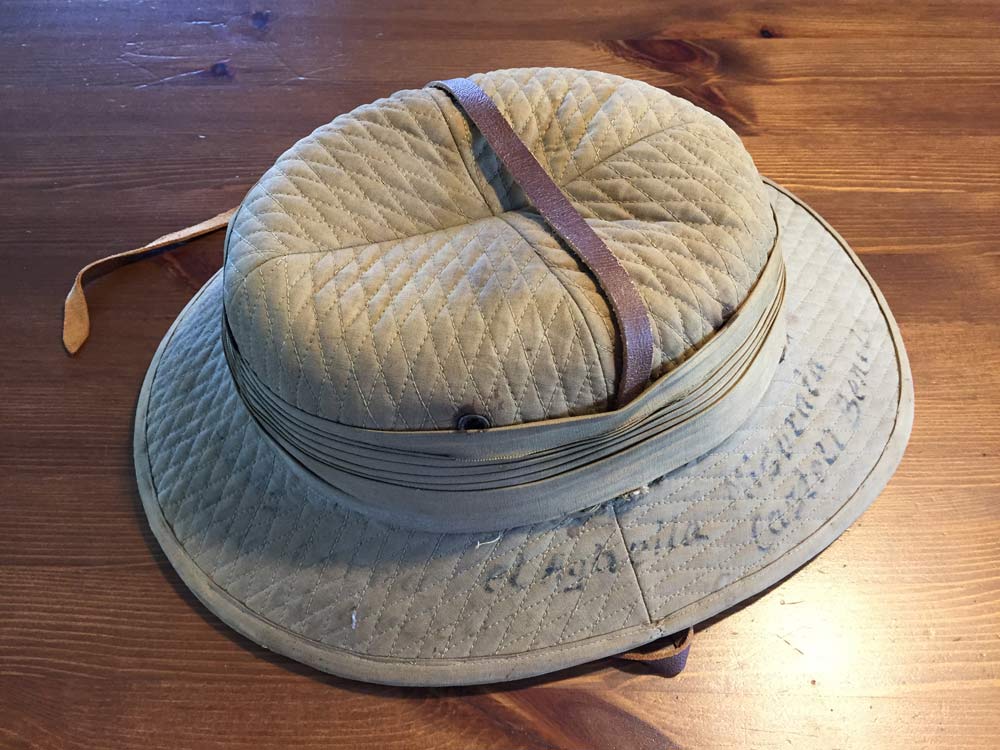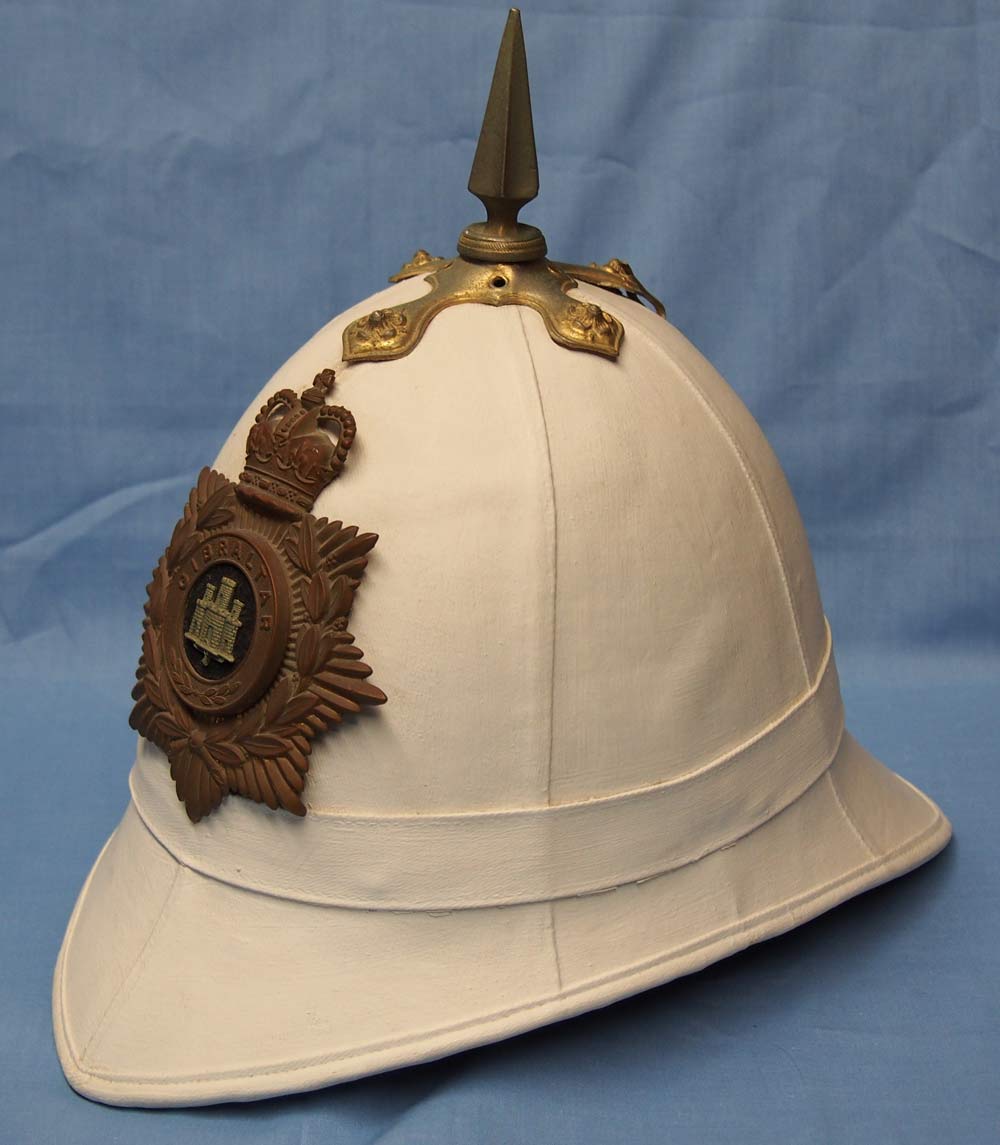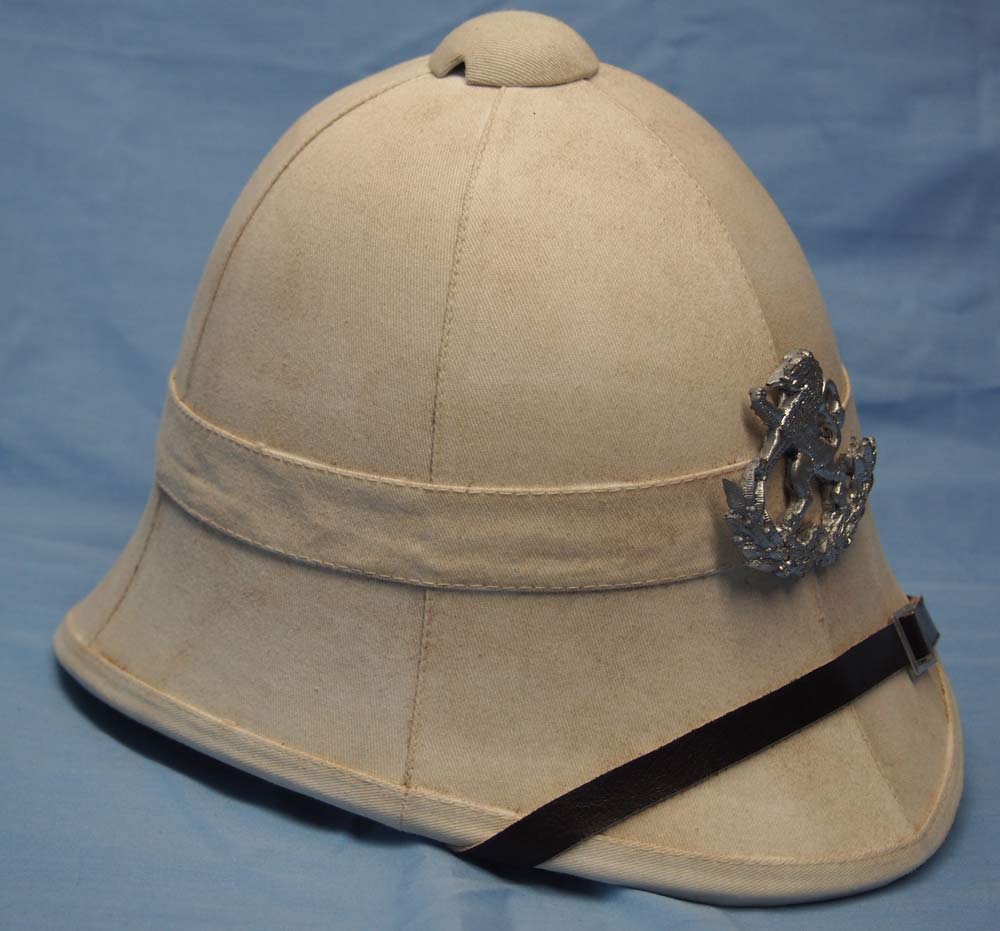
While the term “pith helmet” is used to describe almost all sun helmets, the actual use of “sola pith” material is generally only seen in the construction of helmets made in Asia, including India and the Far East. One of the more popular – and high end – examples of Indian-made sun helmets is the “Cawnpore Tent Club Helmet,” which is noted for its shape and more importantly the quilted linen covering.
All of the examples encountered to date have been made of pith, but recently one has been discovered at a flea market in Munich, Germany, and this example was made of cork. Continue reading →




 The British “
The British “
 Sun/pith helmets in the movies have often been hit or miss – and in some cases have even caused some confusion regarding fact vs. fiction. Most notably are the helmets in the 1964 epic Zulu, which featured helmet plates on the front. Because of this movie many new collectors expect that helmet plates were generally worn in all stations abroad (The helmet plate was authorized only for the so-called Mediterranean stations).
Sun/pith helmets in the movies have often been hit or miss – and in some cases have even caused some confusion regarding fact vs. fiction. Most notably are the helmets in the 1964 epic Zulu, which featured helmet plates on the front. Because of this movie many new collectors expect that helmet plates were generally worn in all stations abroad (The helmet plate was authorized only for the so-called Mediterranean stations).